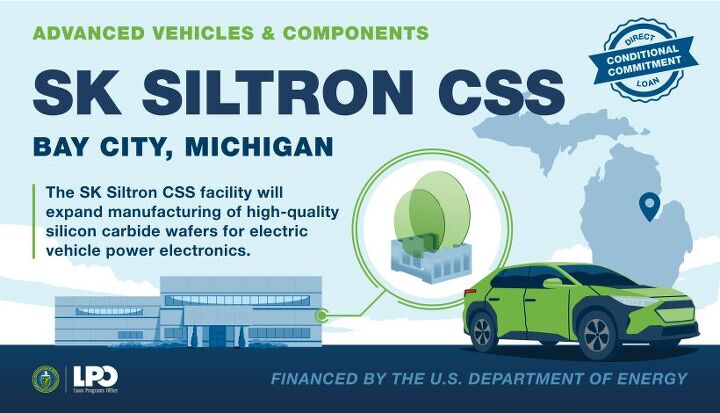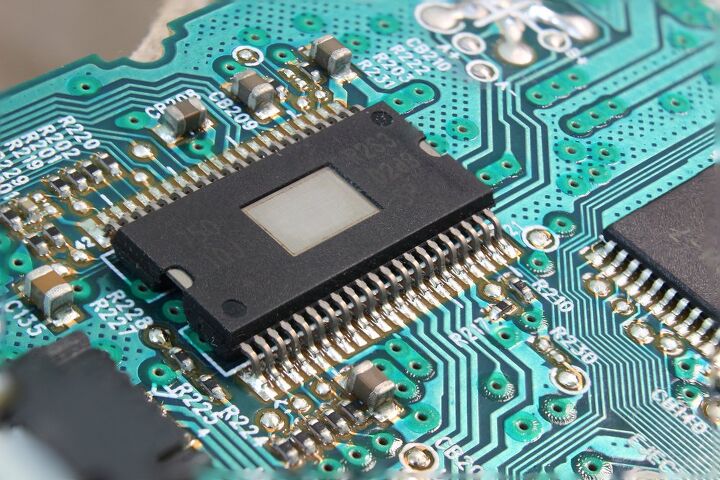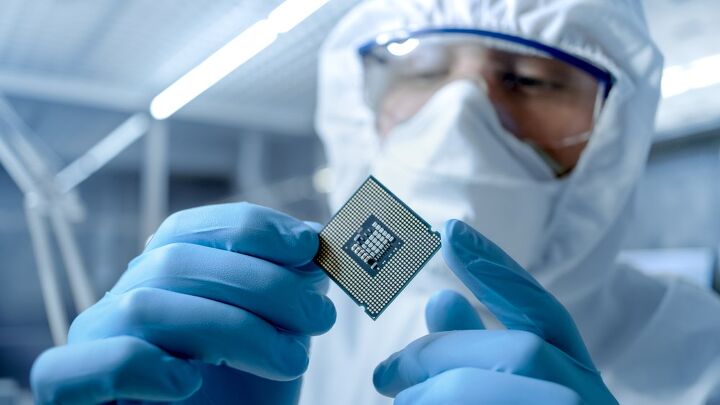#Semiconductors
Report: U.S. Prepping $540 Million for SK Group Semiconductor Factory in Michigan
The United States Department of Energy has confirmed plans to loan $544 million to South Korean tech conglomerate SK Group under the conditions it be used to expand semiconductor production in the Midwest. Finances have been earmarked for a facility operated by subsidiary SK Siltron CSS to expand a plant located in Bay City, Michigan, which had previously expressed plans to build more chips.
Qualcomm Launches One Automotive Chip to Rule Them All
Qualcomm has released a new automotive processor chip designed to help contend with supply chain issues by handling both driver assistance features and the more standard functions tied to the infotainment system.
Stellantis CEO Says Chip Shortage Nowhere Near Ending
Stellantis CEO Carlos Tavares has suggested that the global semiconductor shortage will persist through 2023.
“The situation will remain very complicated until the end of 2023, then will ease a little,” he told French outlet Le Parisien over the weekend, adding that “semiconductor manufacturers have an interest in making business with us again, especially as they’re raising prices.”
Chip Shortage Lambasts Europe, Supply Chains Confront New Problems
Even though the global semiconductor shortage has been going strong for about two years now, the world has failed to successfully manage the situation. Production stoppages remain relatively common within the automotive sector, with manufacturers continuing to attribute factory stalls to an inability to procure a sufficient number of chips. But the excuse seems to have evolved into a catch-all explanation for supply chain issues that continue that go beyond a single missing component.
That makes it a little hard to determine precisely how much of the ongoing production shortfalls can be pinned on semiconductors. But AutoForecast Solutions (AFS) was keen to take a whack at it and determined roughly 1.4 million vehicles have been removed from the automotive industry’s targeted output for 2022 — that’s on top of the 10.5 million units we lost in 2021. While the issue is indeed global, AFS stated that the last batch of vehicles to get the ax was predominantly from Europe.
Tesla Cybertruck Delayed Until At Least 2023
During last week’s earnings call, Tesla CEO Elon Musk confirmed that the Cybertruck would be delayed until at least 2023. That places the polygonal pickup two years behind its original schedule. But who among us with knowledge of the automaker’s production history actually thought it would be delivered on time?
Delaying products has become a hallmark of the Tesla brand and Musk doesn’t seem to be sweating it. Rather than focusing on launching a new vehicle for 2022, the business wants to prioritize increasing capacity and finalizing its move from California to Texas. Now based in Austin, Tesla made $5.5 billion last year compared with the previous record year of $3.47 billion in net income posted in 2020. Musk said the shift into routine profitability is proof that EVs are viable, adding that the company could have done even better if factory output hadn’t been so constrained last year. Unfortunately, those hurdles haven’t dissipated for 2022, encouraging the automaker to wait on both the Tesla Cybertruck and Roadster.
Will Intel's Ohio Chip Plants Fix Automotive Supply Chains?
Intel has announced a $20 billion investment to transform a 1,000-acre plot in New Albany, Ohio, into the latest addition to its U.S. chip-manufacturing hub. Construction is scheduled to commence later this year with operations starting in 2025. But everyone’s wondering if it is going to be enough to rectify the pathetic state in which domestic vehicle production currently finds itself.
Mustang Production Paused at Flat Rock Assembly
Ford will be idling Mustang production this week due to an insufficient supply of semiconductor chips. For all the talk the industry made about getting over supply chain hurdles in 2021, manufacturers continue citing insufficient access to microchips as the primary obstacle preventing them from enjoying more routine operations.
The automaker confirmed the move on Tuesday, explaining that Michigan’s Flat Rock Assembly will be down until sometime next week.
Report: Biden Admin May Link Semiconductor Subsidies to Unions
Despite the semiconductor shortage having encouraged the automotive sector to repeatedly idle factories, word on the ground is that things are becoming more stable. Companies are seeing less production downtime overall and workers are reporting more reliable working conditions across the board. However, several automakers have continued to express concerns (e.g. Volvo), alleging that chip shortages could stretch deep into 2022, while the U.S. government ponders how to advance chip production in-country and become less dependent on Asian suppliers.
Commerce Secretary Gina Raimondo has been touring Michigan, meeting with union members and industry heads, and plans to urge Congress to move on a $52 billion in funding bill aimed at boosting domestic production. We’ve questioned the efficacy of the CHIPS Act before, primarily in relation to how the subsidies would be allocated. But there are new concerns that the plan will mimic the Biden administration’s EV subsidies by spending heaps of taxpayer money and giving union-backed organizations a larger cut.
Automakers Accused of Chip Hoarding, U.S. Considers Defense Production Act
Despite the occasional media report claiming that the semiconductor shortage is nearly over, reality looks quite a bit different. Some manufacturers have managed to temporarily stabilize supply chains, even though others have continued announcing work stoppages as they run out of chips. Wait times for the electronic components have also increased by about 61 percent since the beginning of 2021. Meanwhile, a recent Kelly Blue Book survey had 48 percent of respondents saying they were going to postpone buying a new automobile until shortages end, prices come down, and they can actually find the vehicles they’re looking for. But even those that were willing to buy now expressed a surprising level of acceptance to abandon brand loyalty or their preferred body style just to get a fairer deal on an automobile.
With the United States fairing worse than other regions in regard to chip availability, the White House has been under pressure to solve the problem all year. Thus far, government strategy has focused on encouraging investments for new semiconductor production. But there’s a new gambit being proposed that would invoke a Cold War-era national security law that would force manufacturers to furnish information pertaining to semiconductor supply lines and chip sales.
Rubber Shortages Become Latest Problem for Auto Industry
Those of you tracking the semiconductor shortage can probably take it easy for a while, as practically every industry group on the planet has tentatively agreed we’ll be seeing a chip deficit for a few years. Meanwhile, market analysts are trying to predict the next material we won’t have enough of and rubber is looking like an ideal candidate.
Rubber supplies are drying up and price increases are reportedly beginning to climb at an untenable pace. Despite several years of relatively stable availability and low prices, supply chain disruptions created by lockdowns have left latex harvesters in a bad position. Low prices encouraged many to over harvest their existing crop, rather than invest in farmland. But with shortages looking probable as countries began responding to the pandemic, China went on a buying spree to maintain a robust national stockpile in 2020. The United States was late to the party and now finds itself in a position where scarcity is driving rubber prices through the roof just when it needs to buy more.
Toyota Develops New Hybrid Fuel Economy-Boosting Semiconductor Tech
Looking to wring out more fuel efficiency in its hybrids, Toyota has developed a silicon-carbide wafer semiconductor that could boost efficiency up to 10 percent.

























Recent Comments